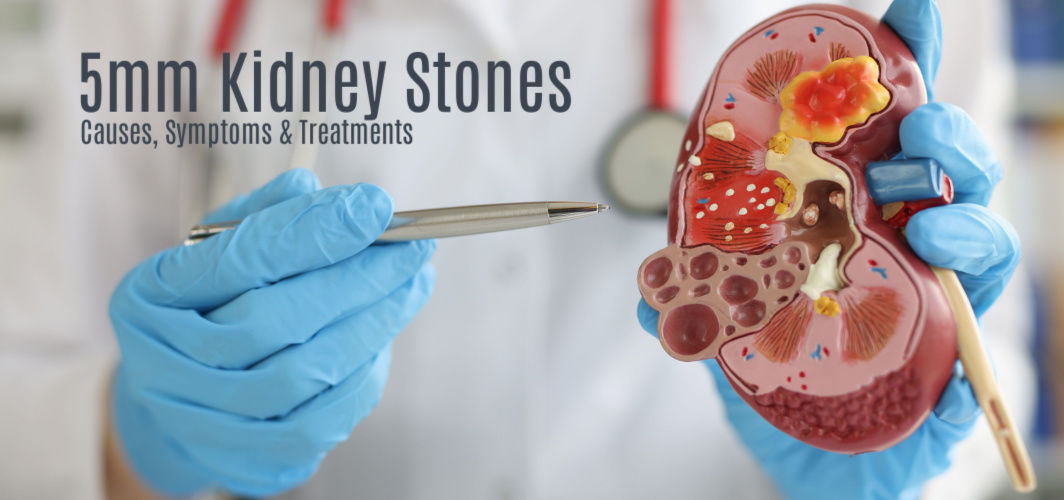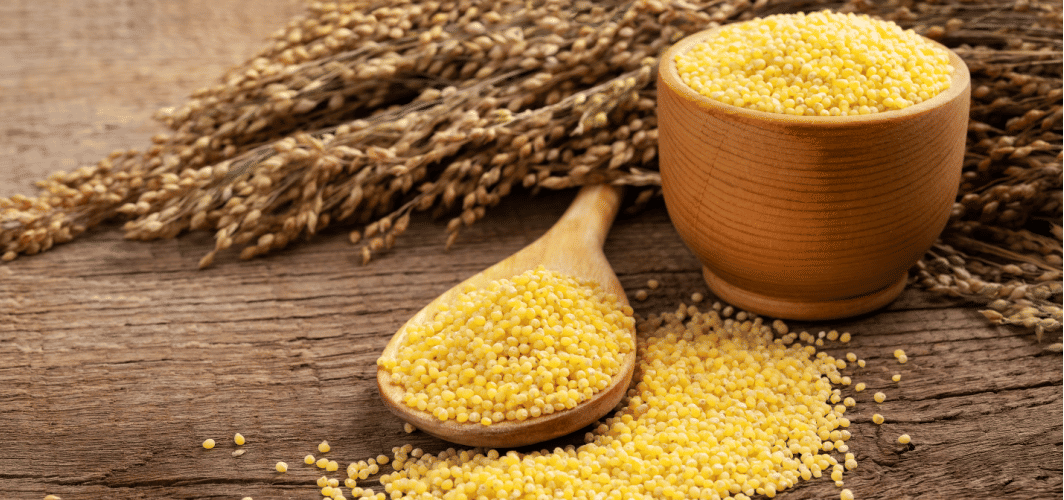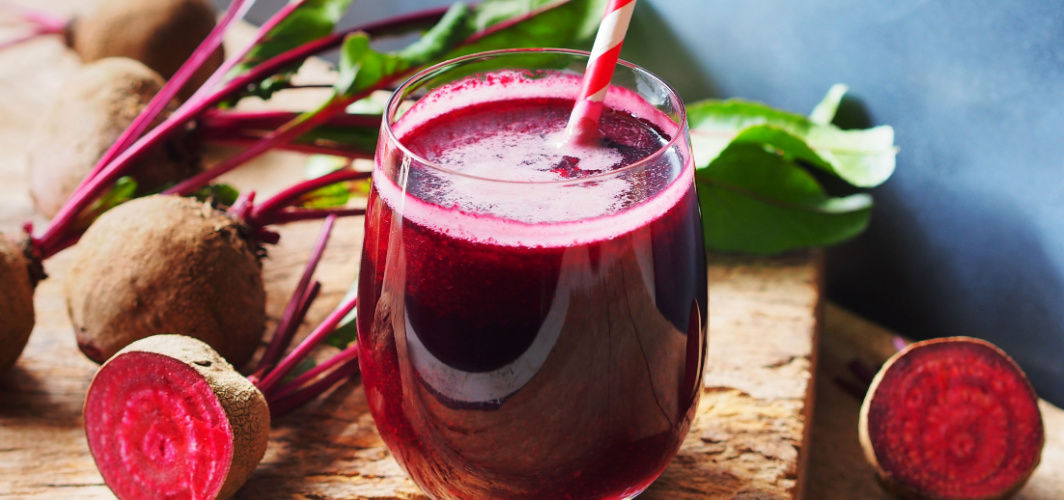General Health
Managing 5 mm Kidney Stones: Causes, Symptoms, Diagnosis & Treatment
8 min read
By Apollo 24|7, Published on - 24 August 2023
Share this article
0
0 like

Kidney stones are mineral and salt deposits that form in the kidneys, also known as renal calculi. Ranging in size and composition, they can be as small as a grain of sand or as large as a golf ball. This common medical condition affects numerous people globally, including a substantial population in India. These stones induce intense pain and discomfort, significantly impacting individuals' quality of life. In this article, we'll explore the causes, symptoms, diagnosis, and treatment options for 5 mm kidney stones.
Different Types of Kidney Stones
There are several types of kidney stones, each with its unique composition. The most common types include:
- Calcium Stones: Calcium Stones are the most prevalent type and are made up of calcium oxalate.
- Cystine Stones: Cystine Stones are rare and are caused by a genetic condition called cystinuria.
- Struvite Stones: Struvite Stones usually form as a result of urinary tract infections.
- Uric Acid Stones: Uric acid stones may occur in individuals with fluid loss from chronic diarrhoea or malabsorption, high-protein diets, diabetes/metabolic syndrome, and genetic factors.
Why Does the Size of the Kidney Stone Matter?
The size of a kidney stone can determine its potential impact on health and the appropriate treatment approach.
- Passage: Smaller stones, like a 5 mm kidney stone, have a higher chance of passing through the urinary tract on their own. However, larger stones may get stuck along the way, leading to blockages and severe pain.
- Treatment Options: Treatment for kidney stones depends on their size. Smaller stones can be managed with increased fluid intake and pain management. Larger stones may require interventions like lithotripsy or surgery.
- Complications: Larger stones pose greater risks, including severe symptoms, urinary tract infections, and kidney damage or failure if they become lodged in the urinary tract.
- Prevention: Understanding the stone size helps healthcare professionals develop personalized prevention strategies to prevent recurring stone formation.
Causes of 5 mm Kidney Stone
Common causes of 5mm kidney stones include:
Dietary Factors
Dietary factors that can cause 5 mm kidney stones include:
- High intake of oxalate-rich foods: Consuming oxalate-rich foods like spinach, beetroot, and nuts increases the risk of kidney stone development. Oxalates combined with urine calcium form crystals that contribute to stone formation.
- Dehydration and Low Fluid Intake: Inadequate fluid intake can contribute to kidney stone formation. Insufficient body fluid leads to concentrated urine, facilitating crystal formation.
- High Salt and Protein Consumption: A diet high in salt and animal protein can increase the amount of calcium and uric acid in the urine, which leads to stone formation.
Medical Conditions and Medications
Medical conditions and medications that can cause 5 mm stones in the kidney include:
- Hyperparathyroidism and Other Metabolic Disorders: Conditions that affect the body's metabolism, such as hyperparathyroidism or certain genetic disorders, can increase the risk of kidney stone formation.
- Urinary tract infections (UTIs): UTIs can lead to the formation of struvite stones. These stones are commonly associated with bacterial infections.
- Certain Medications that Increase Stone Formation: Some medicines, such as diuretics or antacids containing calcium, can increase the risk of developing kidney stones.
Symptoms of a 5 mm Kidney Stone
Some specific symptoms that may be experienced include:
- Renal Colic: Intense, cramp-like pain in the side or back, often radiating to the groin or lower abdomen.
- Hematuria: Blood in the urine, which may appear pink, red or brown.
- Frequent Need to Pass Urine: Often accompanied by a burning sensation or pain during urination.
- Cloudy or Foul-smelling Urine: Due to the presence of bacteria or other substances.
- Nausea and Vomiting: Nausea and vomiting may occur due to the pain caused by kidney stones.
Diagnosis of a 5 mm Kidney Stone
Diagnosing a 5mm kidney stone involves methods such as:
Physical Examination and Medical History Review
During the physical examination, your healthcare provider will assess symptoms, conduct a thorough exam and review medical history, including prior kidney stones or conditions related to stone formation.
Imaging Tests
The commonly used imaging tests include:
- X-rays: X-ray is a non-invasive test that can help determine the size and location of the kidney stone. However, smaller stones may not always be visible on an X-ray.
- Ultrasound: Ultrasound as an imaging technique uses sound waves to create images of the kidneys and the urinary tract. It is particularly useful for detecting larger stones or those located in certain areas of the kidney.
- CT Scans: A computed tomography (CT) scan provides detailed cross-sectional images of the kidneys and can accurately pinpoint the size and location of kidney stones, regardless of their composition.
Laboratory Tests
Some of the tests include:
- Urine Analysis: Urine analysis helps identify any abnormalities in the urine that may indicate the presence of a kidney stone. It can also provide information about kidney function.
- Blood Tests: Certain blood tests, such as serum creatinine levels, can help assess kidney function and determine if there are any complications associated with the kidney stone.
5 mm Kidney Stone Treatment Options
The choice of treatment depends on various factors, including the location and composition of the stone and the patient's overall health. Here are some of the treatments for a 5 mm kidney stone:
Conservative Management Approaches
Conservative management approaches focus on non-invasive methods to address kidney stones.
- Hydration and Increased Fluid Intake: Drinking plenty of water can help flush out the stone from the urinary tract. Aim for at least 2-3 liters of water per day.
- Pain Management with Over-the-counter Medications: Non-steroidal anti-inflammatory drugs (NSAIDs) like ibuprofen can help relieve pain associated with kidney stones.
Medical Interventions for Symptom Relief and Stone Passage Facilitation
Some of the medical intervention that can be employed are:
- Medications to Relax the Ureter Muscles and Promote Stone Passage: Alpha-blockers such as tamsulosin can help relax the muscles in the ureter, making it easier for the stone to pass.
- Extracorporeal Shock Wave Lithotripsy (ESWL): This treatment involves the use of shock waves to break the stone into smaller fragments.
Surgical Interventions for Larger or More Complex Stones
In some cases, surgical intervention may be necessary for larger or more complex stones. Some medical procedures may be performed to remove or disintegrate the stone, such as:
- Ureteroscopy: Ureteroscopy surgery is a minimally invasive procedure used to remove or break down kidney stones using a small, flexible tube inserted through the urethra and bladder.
- Percutaneous nephrolithotomy: Percutaneous nephrolithotomy involves accessing the kidney through a small incision in the back to remove or break down large kidney stones.
Prevention of 5 mm Kidney Stone Recurrence
Kidney stones can be painful and a recurrent problem if not managed effectively. Here are some key strategies that can help:
Dietary Modifications and Fluids
Adjusting your diet can play a crucial role in preventing 5 mm kidney stone formation.
- Limit consumption of foods high in oxalate, such as spinach and chocolate, as they can contribute to stone formation.
- Reduce sodium intake to less than 2,300 mg per day to prevent calcium buildup in the kidneys.
- Maintain a balanced diet that includes adequate fibre, fruits, and vegetables to promote overall kidney health.
Medications to Prevent Stone Formation
Based on the type of stone, your doctor may prescribe medications to reduce the risk of recurrence.
- Medications such as thiazide diuretics or citrate supplements may be prescribed to reduce the formation of certain categories of kidney stones.
- These medications work by altering the chemical composition of urine or reducing the concentration of stone-forming substances.
Lifestyle Changes to Reduce the Risk of Future Stones
Adopting healthy lifestyle habits can significantly lower the risk of future 5mm kidney stones.
- Regular physical activity can help maintain a healthy weight and reduce the risk of stone formation.
- Quit smoking, as it can increase the risk of developing 5mm kidney stones.
- Limit alcohol consumption, as excessive alcohol intake can lead to dehydration and increase the risk of stone formation.
In conclusion, a 5 mm kidney stone can result from multiple factors such as dehydration, diet, and medical conditions. Its symptoms can be alleviated through medication and lifestyle changes. It is important to seek medical advice if you suspect you have a 5mm kidney stone, as early diagnosis and appropriate treatment can help prevent complications and manage the condition effectively.
Consult Apollo’s Expert Nephrologists
FAQs
Q1. Can a 5 mm kidney stone pass on its own?
A1. Depending on its location and symptoms, a 5 mm kidney stone may pass naturally with increased fluid intake and pain management.
Q2. How long does it take to pass a 5 mm kidney stone?
A2. The time it takes to pass a 5 mm kidney stone varies from person to person. It may take anywhere from a few days to several weeks.
Q3. Can a 5 mm kidney stone recur?
A3. Yes, the risk of developing another kidney stone after experiencing one is higher.
Q4. When should I seek medical attention for a 5 mm kidney stone?
A4. Seek immediate medical attention if you experience severe pain, fever, difficulty urinating, or blood in your urine.
Q5. Is surgery required for a 5mm kidney stone?
A5. Surgery is usually not required for a 5mm kidney stone unless it causes severe pain or complications.
General Health
Consult Top Nephrologists
View AllLeave Comment
Recommended for you

General Health
Effective Skin Care Routine For Oily Skin
Dive into effective skincare for oily skin with personalized routines, expert tips, and a journey to lasting results. Unveil radiant and healthy skin with expert tips.

General Health
2023 the International Year of Millets: Know 7 Health Benefits of This Cereal
Millets, one of the world's oldest cultivated grains and staple food, are becoming increasingly popular due to their high fibre, protein, and antioxidant contents. They are also rich in essential amino acids and various vitamins and minerals. Including millet in your daily diet can improve your overall health and well-being.

General Health
Benefits Of Drinking Beetroot Juice For Gut Health
Beetroot juice plays a healthy role in supporting digestion and gut health. The fibre and antioxidants in beetroot juice benefit digestion and gut health. You can incorporate it into your diet by making a smoothie or adding it to salad dressing.
Subscribe
Sign up for our free Health Library Daily Newsletter
Get doctor-approved health tips, news, and more.
Visual Stories

Could There Be More to Your Snore?
Tap to continue exploring
Recommended for you

General Health
Effective Skin Care Routine For Oily Skin
Dive into effective skincare for oily skin with personalized routines, expert tips, and a journey to lasting results. Unveil radiant and healthy skin with expert tips.

General Health
2023 the International Year of Millets: Know 7 Health Benefits of This Cereal
Millets, one of the world's oldest cultivated grains and staple food, are becoming increasingly popular due to their high fibre, protein, and antioxidant contents. They are also rich in essential amino acids and various vitamins and minerals. Including millet in your daily diet can improve your overall health and well-being.

General Health
Benefits Of Drinking Beetroot Juice For Gut Health
Beetroot juice plays a healthy role in supporting digestion and gut health. The fibre and antioxidants in beetroot juice benefit digestion and gut health. You can incorporate it into your diet by making a smoothie or adding it to salad dressing.